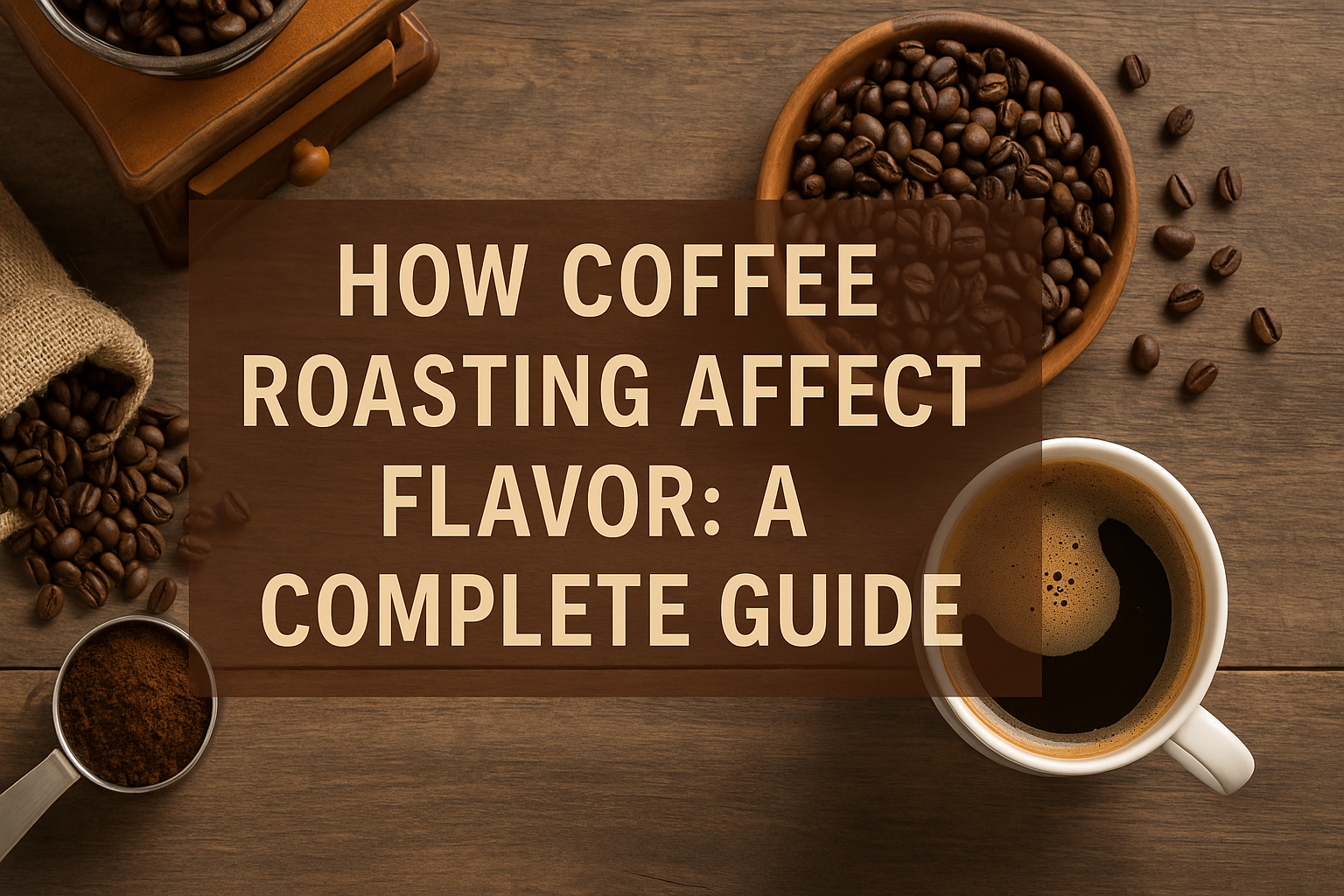Roasting is one of the most crucial steps in transforming green coffee beans into the aromatic, flavorful coffee we love. The roast level significantly influences the coffee’s flavor, aroma, and body. In this article, you’ll learn how different roasting profiles affect coffee and how to choose the right one for your taste.
What Happens During Coffee Roasting?
Roasting is a chemical transformation where green coffee beans are exposed to high heat, triggering:
- Maillard Reaction: Creates browning and complex flavors.
- Caramelization: Breaks down sugars for sweetness.
- Dehydration: Reduces moisture, making beans brittle and grindable.
- Expansion: Beans double in size and change color.
The roast level depends on how long and at what temperature the beans are roasted.
Common Coffee Roast Levels
1. Light Roast
Characteristics:
- Light brown color
- Dry surface (no oil)
- Preserves origin flavors
Flavor profile:
- Bright acidity
- Floral and fruity notes
- Tea-like body
Best for:
- Pour-over methods (V60, Chemex)
- Single-origin coffees
2. Medium Roast
Characteristics:
- Medium brown color
- Slightly more body
- Balanced flavor
Flavor profile:
- Milder acidity
- Chocolate, caramel, and nutty tones
- Rounded, smooth finish
Best for:
- Drip coffee makers
- French press
3. Medium-Dark Roast
Characteristics:
- Rich brown color
- Light oil sheen on surface
- Fuller body
Flavor profile:
- Reduced acidity
- Deeper chocolate, spice, and toasted notes
Best for:
- Espresso
- Moka pot
4. Dark Roast
Characteristics:
- Dark brown to almost black color
- Oily surface
- Pronounced bitterness
Flavor profile:
- Smoky, robust, and bold
- Low acidity
- Bitter-sweet flavors
Best for:
- Espresso-based drinks
- Lovers of strong, traditional coffee flavors
How Roast Level Impacts Flavor
| Roast Level | Acidity | Body | Flavor Notes |
|---|---|---|---|
| Light | High | Light | Fruity, floral |
| Medium | Balanced | Medium | Chocolate, caramel |
| Medium-Dark | Low | Full | Spice, toasted nuts |
| Dark | Very low | Heavy | Smoky, bitter |
Choosing the Right Roast for Your Taste
- Prefer bright and complex flavors? Go for light roasts.
- Like balanced, smooth coffee? Opt for medium roasts.
- Enjoy bold and robust profiles? Choose dark roasts.
How Roasting Affects Brewing
Different brewing methods pair better with specific roast levels:
- Light roasts excel in manual brews like pour-over, where nuanced flavors shine.
- Medium roasts suit automatic brewers and immersion methods.
- Dark roasts complement espresso machines for intense, concentrated shots.
Should You Roast Coffee at Home?
Pros:
- Complete control over roast level
- Fresh coffee whenever you want
- Learning experience
Cons:
- Requires equipment (roaster or modified popcorn popper)
- Steep learning curve
- Smoke and odor considerations
Final Thoughts
Roasting is an art and science that shapes coffee’s personality. Understanding how roast levels affect flavor empowers you to select coffee that suits your preferences and experiment with new profiles. Whether you prefer a delicate light roast or a bold dark roast, appreciating the roasting process enhances your overall coffee experience.
